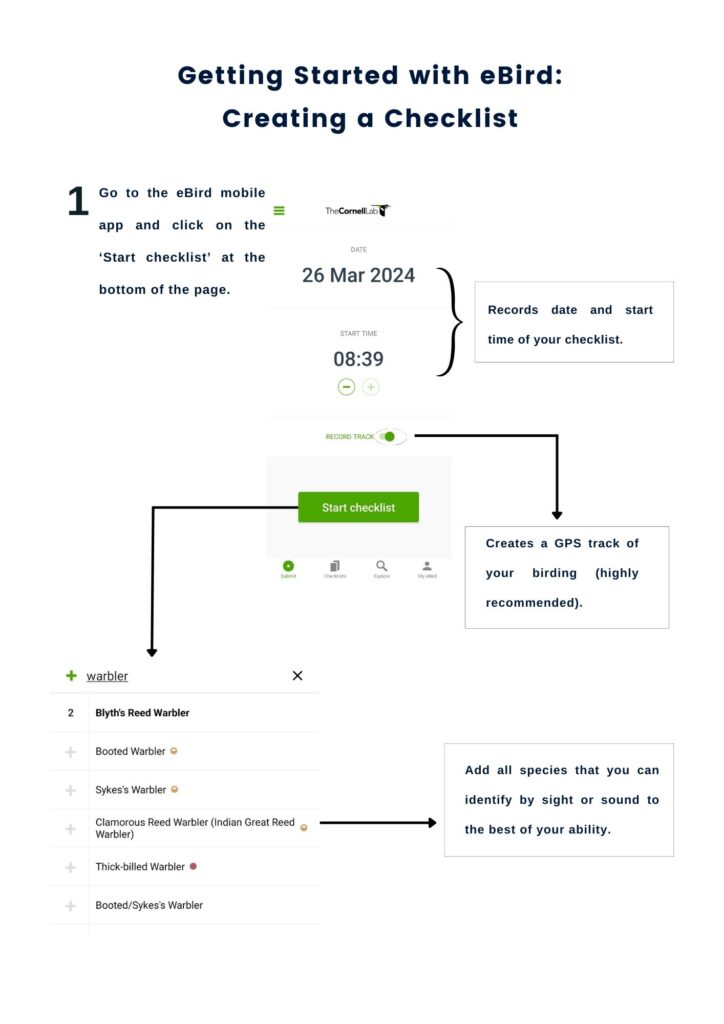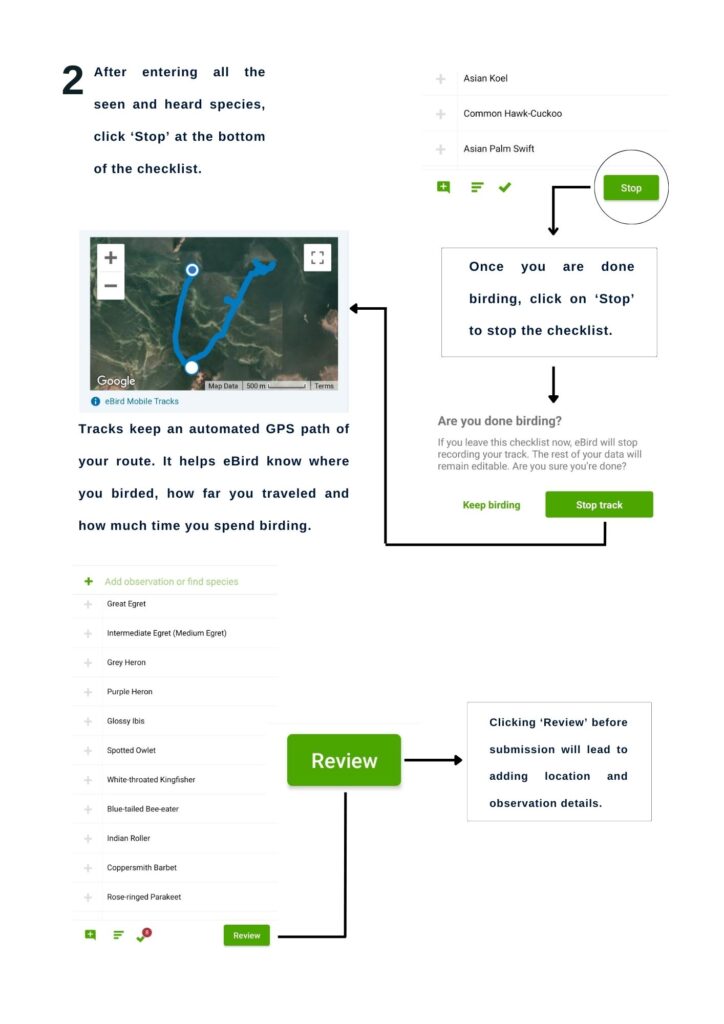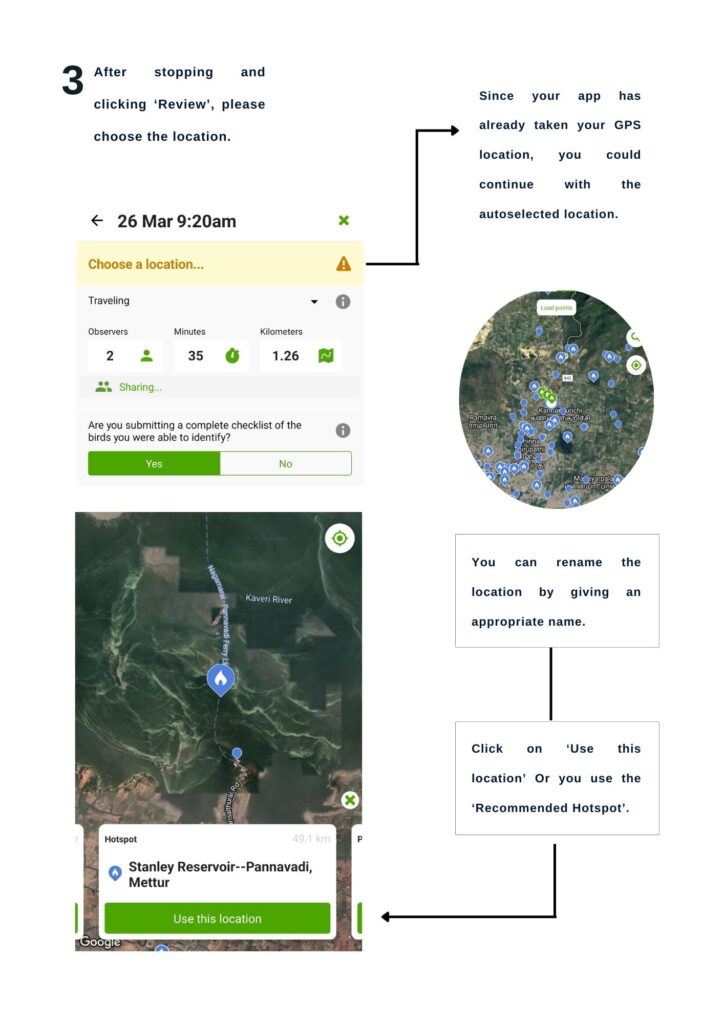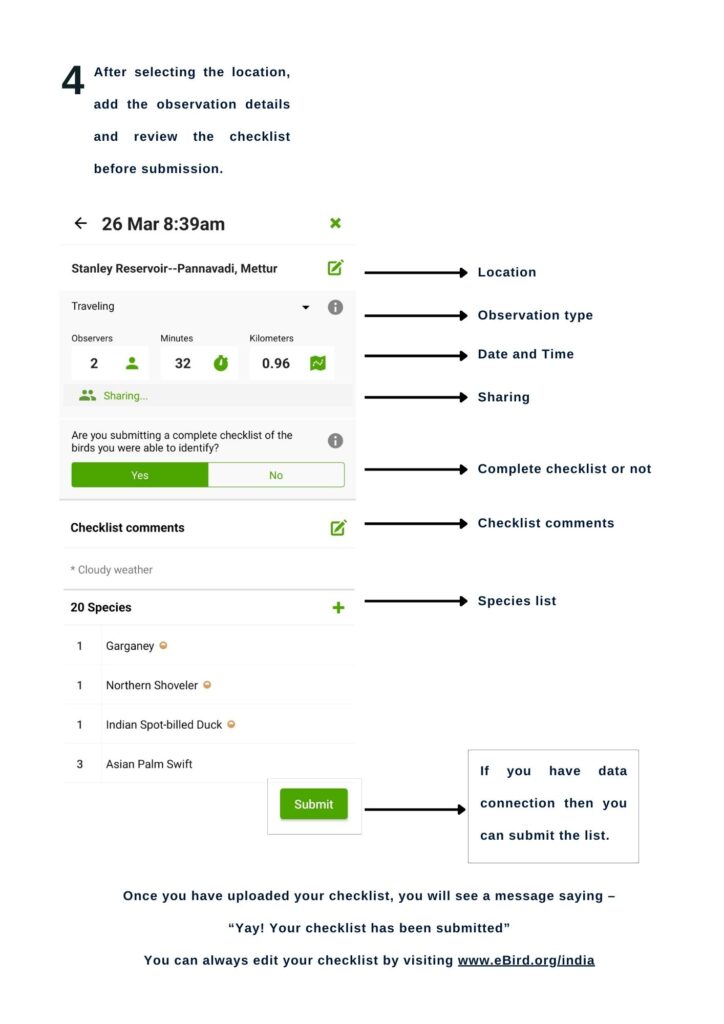Getting Started

 Are you a birdwatcher in India curious about how and why to use eBird? Here’s the quick version.
Are you a birdwatcher in India curious about how and why to use eBird? Here’s the quick version.
Getting started
From the outside, eBird looks like a large and complex system, but it’s really very easy! Just sign up for an account, look for birds outside your window for 3 minutes, and upload a list of what you see. Recording the birds you observe in the field has become easier with eBird Mobile App, allowing your data to be openly accessible for scientific research, education, and conservation purposes. The app transfers data directly from iOS and Android devices to your eBird account online. To help you on your way, we have prepared a brief infographic on how to upload your bird observations through the app.
The above infographics are created by Angeline Mano
If you wish to upload your bird sightings to the eBird website, then click on this step-by-step guide to learn how.
Why use eBird
If you’d like to keep track of what birds you have seen, where and when, then eBird is the tool for you. Upload your sightings to eBird. When you visit eBird.org, sign in to your account, and you’ll be able to see summaries like your life list, year list, country list, state list and district list. You can explore where and when you have seen each species, and can download summaries of your data.
Apart from organising your own sightings, you can also explore the entire eBird database (250 million records worldwide, over 1.5 million from India, and counting) using the seasonality charts, range maps, location explorer, hotspot explorer and more. Plan your birding trips using the location explorer and Targets. You can also download every one of your sightings; and even the entire eBird dataset (or a subset, eg for India).
Finally, eBird is a scientific database, and your observations contribute to a better understanding of bird distribution, abundance, and change. Join in the documentation and monitoring of India’s birds by starting to use eBird today! As an individual, you can help by uploading birdlists from each of your trips; the more regularly you bird and upload lists the better. If you are part of a birding group, do consider starting a survey or monitoring project for the birds and habitats in your area.
If you have comments or questions, we’d love to hear from you. Please see how you can get in touch on our Contact page.




